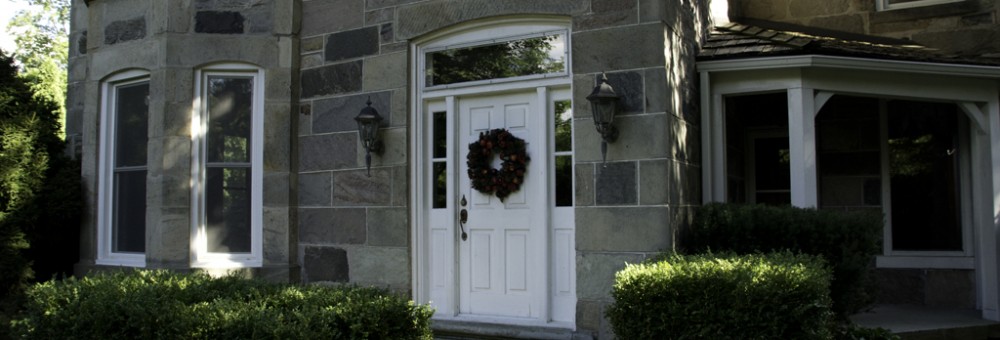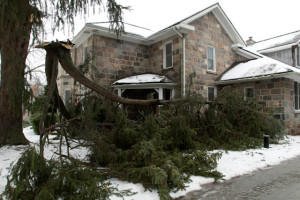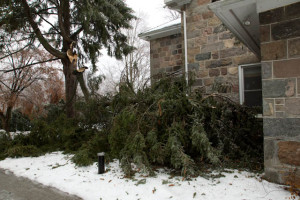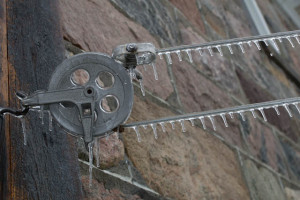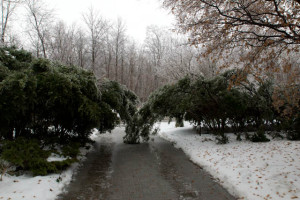All of the weather forecasters were clear and unequivocal: We were getting an ice storm, and it wasn’t going to be pretty.
This was, in our view, moderately problematic. Dianne and I had arranged to have a potluck dinner with friends in Toronto. Dishes were being made, wines were being paired, and excitement was brewing. All we had to do was get to Toronto. And all our friends had to do was navigate the City to where we were all assembling. Really, how hard could that be?
Based upon the weather forecasts, it might be very hard indeed. We were already at the point where, if we went, we would be taking the train. My car was still downtown after finally getting winter tires installed, so there wouldn’t be a problem travelling home. We just had to get there from here. Of course, trains are relatively straightforward; it would also depend upon whether or not our friends could travel as well. That might be a different challenge.
We left it with an advisory that we were ‘monitoring the situation’ and would make a call in the morning. And so all at Boo Manor went to sleep as winter’s icy tendrils clenched much of Ontario in their frigid clutches.
Waking the next morning, I tried to figure out what was going on. You would think that would be easy in this day of universal internet connectivity, but not so much. For starters, our internet was down; not a good initial sign. And it was Sunday, and the media outlets weren’t jumping on the situation to let everyone know where things stood. It vacillated between ‘might be OK’ and ‘looking pretty tenuous out there’, with no really definitive suggestion of what to do. Finally, with reports coming in of streetcars in Toronto pulled off the roads and downed trees in the city, I figured that discretion was the better part of valour.
I had only just pressed [send] on an email, suggesting that we postpone our dinner, while delighting in how well Boo Manor had weathered the storm, when I heard an almighty ‘whumph’. My initial thought was that a load of snow had slid off the roof with all of the rain. Looking out the kitchen window, however, revealed a much more immediate cause of concern: our giant spruce had lost a massive limb. Apparently it had succumbed to the weight of the ice, and had simply snapped.
The ‘humph’ was loud enough to wake Dianne. We both were concerned about the house and the tree, so I quickly pulled on jacket and boots to head out and inspect the damage. My first look was not pretty; the limb that fell off was about two feet across at the base, and nearly forty feet long. It had basically fallen in the direction of the kitchen, home to a number of Boo Manor’s essential services.
Incredibly, though, the tree—in deciding where to drop its forlorn limb—managed to choose a location that, by mere inches, avoided any real damage. Thousands of pounds of wood plunged to earth, and yet left the kitchen, the dining room porch, the main porch, the driveway, the wellhead and a decorative polar bear surprisingly unscathed.
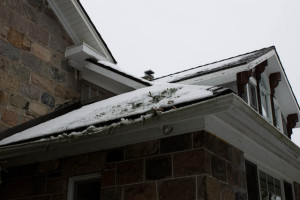
A bit of snow scraped off the roof, a bent eavestrough, and some inappropriately placed sprigs of spruce.
The branches had struck three roofs on the way down, but each appeared to have only experienced a glancing blow. The eavestrough on one roof was bent, and was twisted on another. Pine boughs stuck out at odd angles from the eaves, and snow was scraped off. But apart from a rebuild of one eavestrough, and the need to inspect the shakes on the roofs that were hit, the rest of the house was untouched. You couldn’t drop that branch any better if you had planned it.
Given that we were no longer going anywhere, there was nothing for it but to settle in for a cozy day in the country. I lit a fire in the hearth, made my second coffee, and settled in for a protracted read. Calls were out to contractors, I had already talked to our landscaper about getting an arborist in, and there was nothing else to be done but let Mother Nature take her course.
And a fine thing that we did. One friend’s front door is frozen shut, and the chain has come off the garage door opener. Another friend has been without power since approximately 2am, their potluck contribution of fish now of questionable ingestability. More than 250,000 houses in Toronto are currently without power, and some may not be restored until Christmas day.
In this particular instance, Mother Nature’s hint is not overly subtle: stay home.
